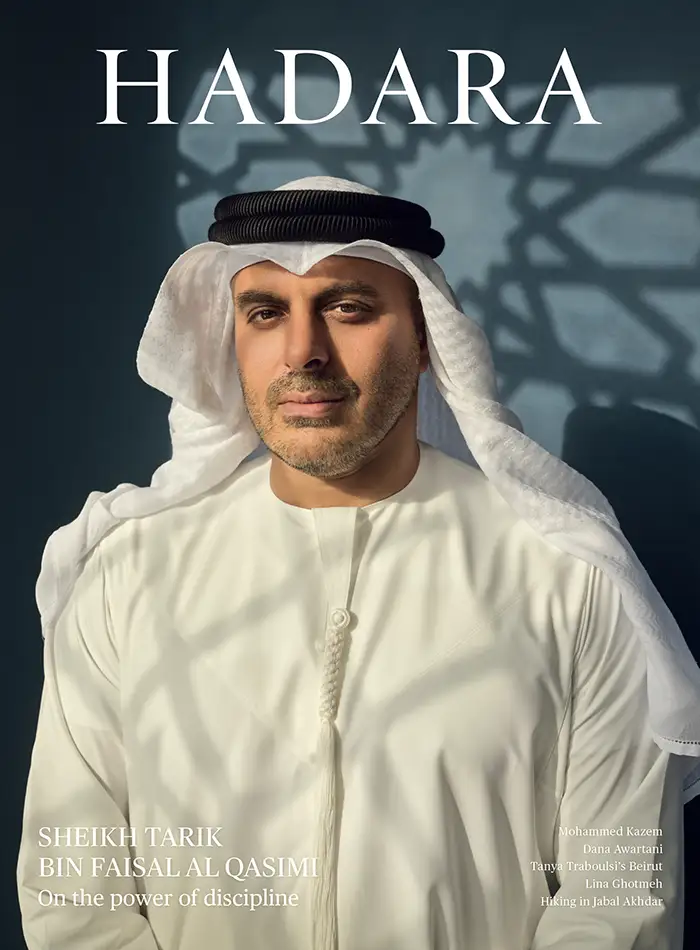Survival of the fittest
Zeinab Alhashemi’s conceptual practice is a commentary on the metaphysical and a reflection of her own story.
by Anna Seaman
Imagine extracting Charles Darwin (or perhaps just his theory of evolution) from Victorian England and implanting him two centuries into the future to a time when technological and human intelligence are inseparable. In our age of AI, advanced medical science, and engineering, how would Darwin chart the survival of the fittest? Would man-made inventions be considered the building blocks of life? And who would the most likely survivors be?
Emirati conceptual artist Zeinab Alhashemi explores this concept with what she calls “hybrid beings”. Her 2024 installation There May Exist at the Theseus Temple in Vienna is a pyramid of camel-hide covered oil barrels. She envisions them as a metamorphosis of a camel, infused with history and memory and somewhere between a living object and an inert sculpture. “I imagine the camel as having evolved over thousands of years into a new form that fits into our modern world,” she says.
The Theseus Temple was completed in 1823 by architect Peter von Nobile. It was designed to house a single artwork: Antonio Canova’s white marble masterpiece Theseus Slaying the Centaur. The artwork stood alone there for 70 years until it was moved, in 1890, to the Kunsthistorisches Museum, where it remains. Alhashemi’s conceptual installation is part of an annual initiative to house a contemporary artwork inside the neoclassical building.
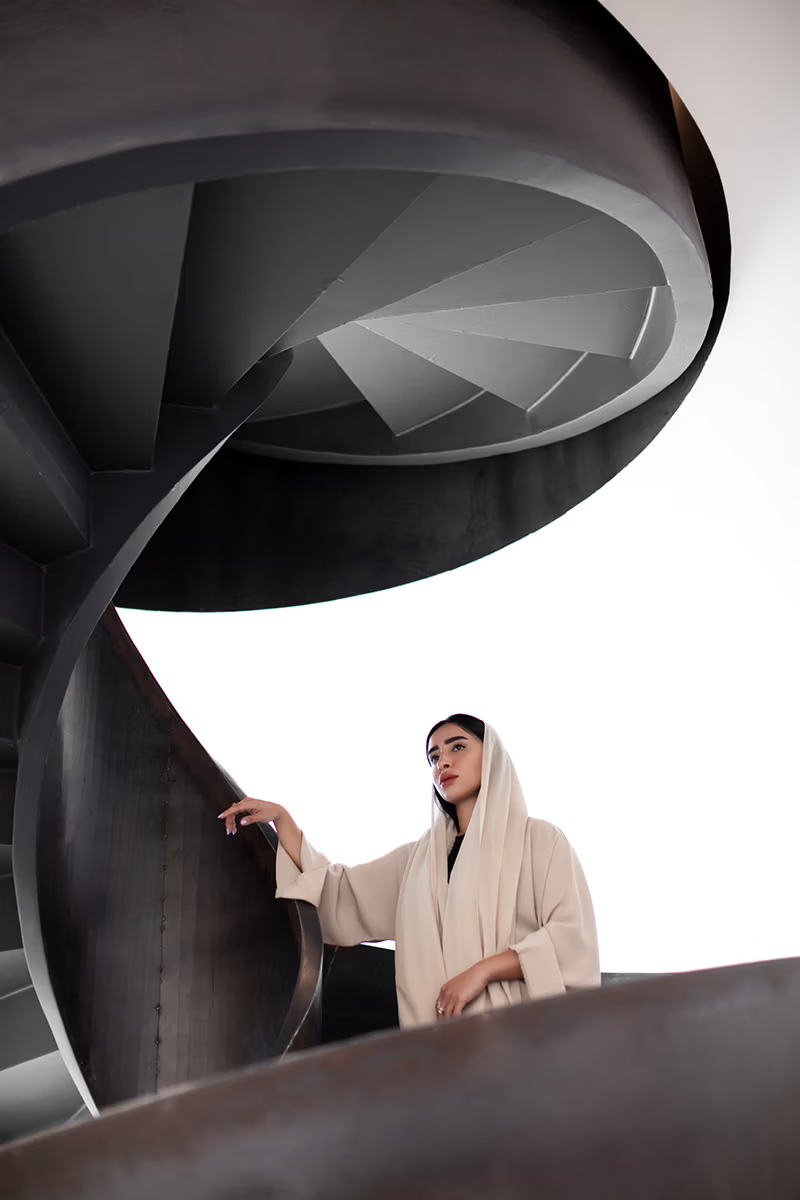
Opening image, Camoulflage 1.618: The Unfinished Obelisk (2022) At the end of 2022, Alhashemi exhibited in Art D’Égypte. The incomplete structure was installed in the desert beside the Great Pyramids of Giza. Photograph by Mahmoud Elbeleehy/MO4. Above, portrait of Alhashemi by Rudolf Azzi.
“I was angry at life for making me imperfect. The only thing I could control was my art, and I was striving for perfection.”
The connection between the organic, once-living hide still bearing the hairs of its former wearer and the cold, hard-edged industrial material over which the skin is stretched began in Alhashemi’s practice in 2015 with her Camoulflage series. But it is only in recent years that she has named the industrially formed, geometric sculptures enveloped in camel leather hybrid beings.
These architectural formations reveal her preoccupation with the profound metamorphosis of the UAE since the discovery of oil. From her use of camel hides, the viewer can weave tales of past meeting present, urbanism versus nature, and the tension between progress and tradition. But there is a deeper understanding to be had by pondering the juxtaposition of skin and mesh metal, heavy screws and rods, and hearing Alhashemi’s own story.
In February 2009, just after graduating from Zayed University, Alhashemi was involved in a traumatic car accident that fractured both hips, thighbones, and knees. It also shattered her right ankle and right elbow. Over the course of 11 surgeries, her joints were replaced with titanium, her bones were grafted, and her body was held together by bars and rods. She was in a wheelchair and on crutches for more than 18 months and had to learn to walk again.
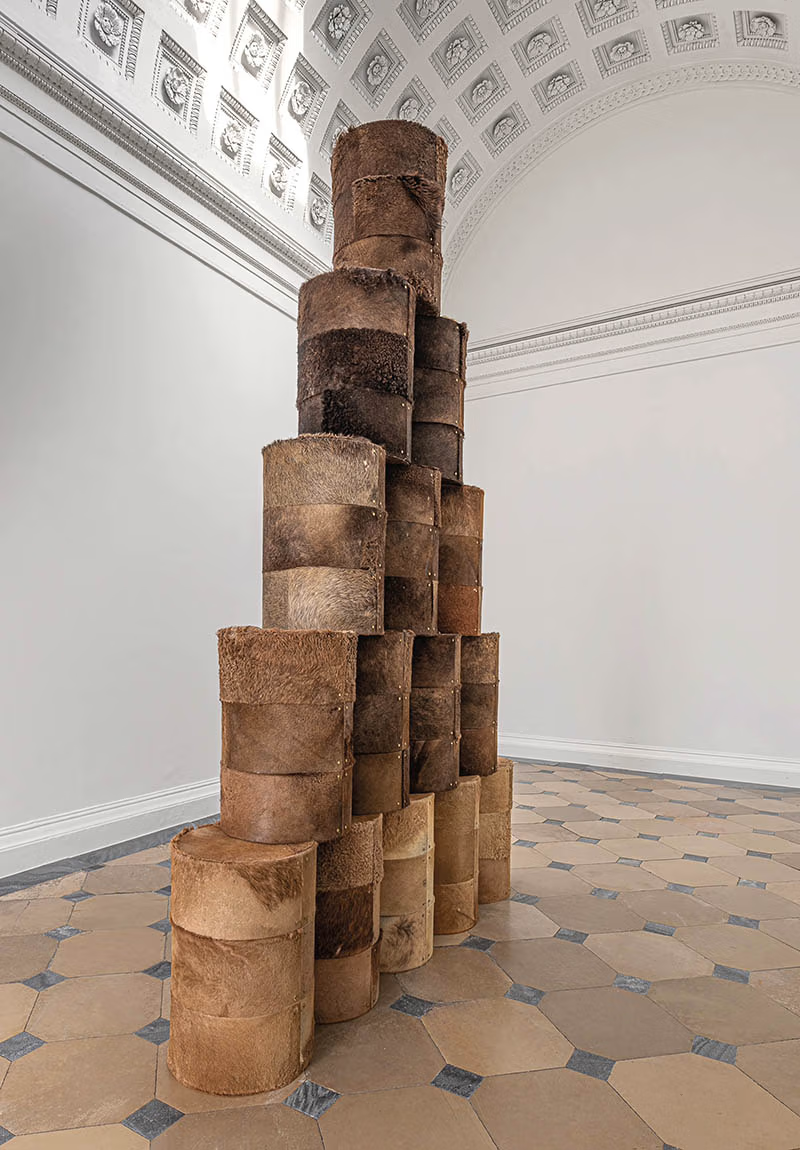
There May Exist (2024) Alhashemi’s installation in the Theseus Temple, Vienna. The link between progress and decline reverberates through her work. Courtesy of KHM-Museumsverband.
“I don’t know if I left this world and came back again but I know it changed me forever,” she says. Her most vivid memory is waking up in hospital and looking down at her broken lower body from which a metal framework was protruding. Thus began her fascination with grids, geometry, and symmetrical structures.
“I needed more information about life,” she says. “I wanted to understand the body, the brain, and the soul.” Over the next few years, she visited mentors, healers, and psychiatrists and spent many hours researching spirituality. She discovered the pureness of geometric perfection and began recreating it in her art. “I was angry at life for making me imperfect,” she recalls. “The only thing I could control was my art, and I was striving for perfection.”
During the 2010s, she exhibited in group shows which helped her to refine her practice. “I was observing and learning alongside a handful of artists, who almost became like a collective. That community gave me a safe space for expression,” she says. During this time, Alhashemi’s work was often placed at the junction of art and design because she was drawn to non-organic forms. “I was interested in the relationship between man-made and natural, between theory and practice,” she says.
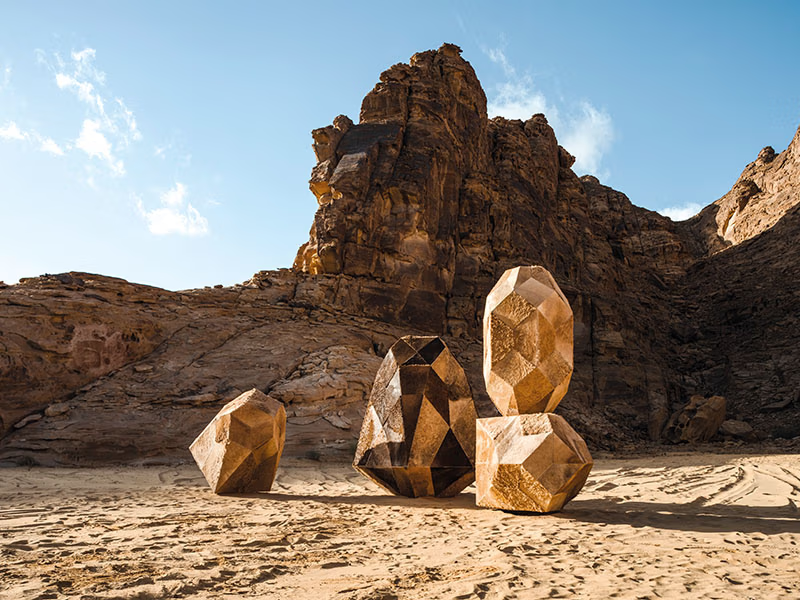
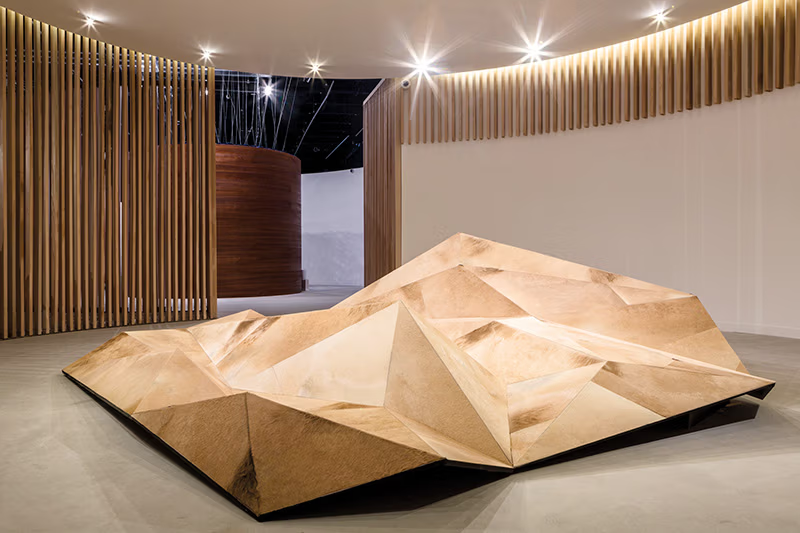
Camoulflage 2.0 at Desert X AlUla 2022, top. A combination of camel and camouflage. The installation strikes the viewer as a desert scene from which an abstract camel silhouette emerges. Photo by Lance Gerber. Above, Camoulflage (2015). Alhashemi’s work explores the changing role of camels on the Arabian Peninsula. The connection she makes between organic and industrial materials began here. Courtesy of Leila Heller Gallery.
When COVID-19 forced us into isolation, she used the time to reflect on her work and emerged with a new confidence that was displayed in her first solo show in 2022 at Leila Heller Gallery in Dubai. There was a shift in her practice from raw to more refined formations, displayed in the exhibition—Constructivism: We See Things as We Are—as an exploration of colour, structure and pattern.
As Above, So Below (2022), displayed at Noor Riyadh, was a light installation rooted in geometry and based on the sacred seven-pointed star that embodies the concept of eternity. Crafted with reinforced metal rods and fluorescent tube lights, the industrial feel of this piece sits fluidly alongside its spiritual essence.
2022 was also the year that Alhashemi’s hybrid beings emerged. For Desert X AlUla she created Camoulflage 2.0—an installation of rock-like sculptures covered in camel skin resembling an abstract camel silhouette. The use of hides triggers a conversation about the relationship with the camel, so entrenched in Khaleeji culture, but Alhashemi was at first drawn to it as a practical material. However, as her fascination with camel leather grew, fuelled by countless visits to an Al Ain tannery, she reflected on the evolution of the material into a commodity. In her art she used it to create new beings, questioning the process of deconstruction of the camel and her reconstruction of it into an artwork, drawing parallels with her own physical reconstruction.
“It reminded me of the process of natural selection and Charles Darwin’s theory, and I applied it in my work,” she says. “I envisioned that camel caravans had been walking through the desert for centuries, slowly evolving into bizarre beings.”
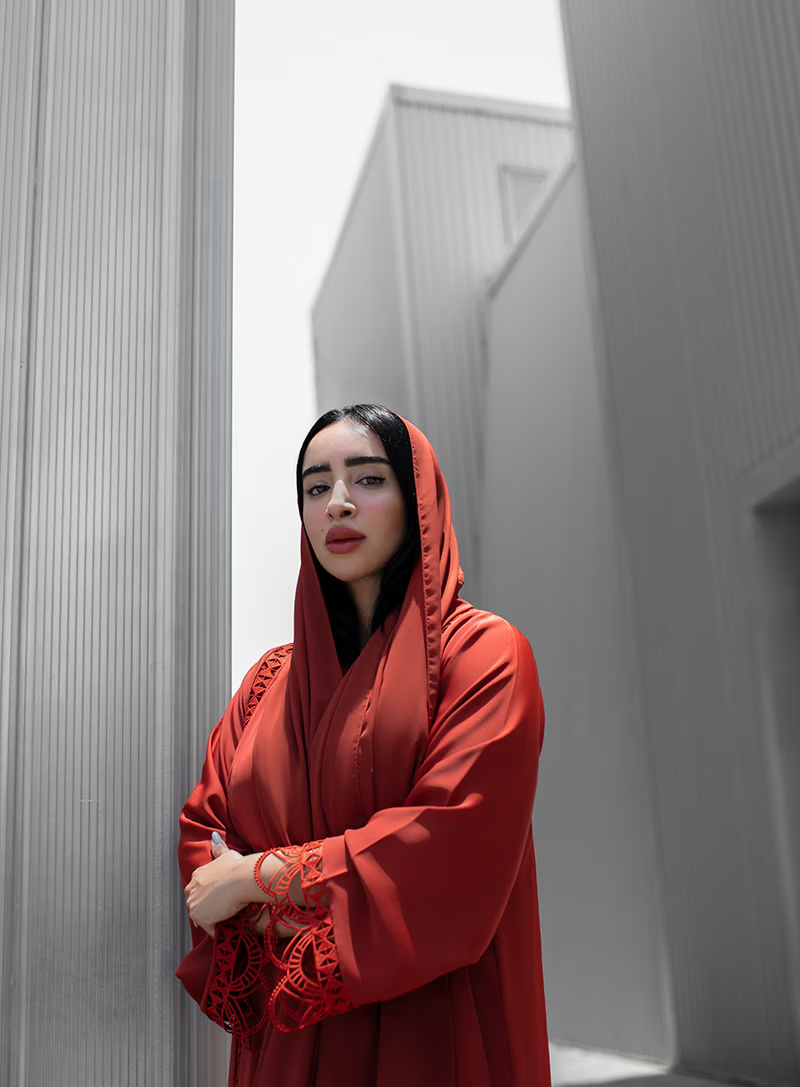
Portrait by Rudolf Azzi
At the end of 2022, Alhashemi exhibited in Art D’Égypte Forever Is Now 2 with Camoulflage 1.618: The Unfinished Obelisk. The incomplete structure was installed in the desert beside the Great Pyramids of Giza with the top half revealing the obelisk’s skeletal steel form and the bottom half wrapped in camel hide. Titled after the golden ratio, which speaks of the perfection of the universe, the work also referenced her vision of a transplanted theory of evolution.
“The camels decided to morph from being used for tourism into an obelisk that is celebrated, and after that they travelled to Vienna as oil barrels to sit in a temple and be celebrated again,” she explains.
There May Exist at the Theseus Temple, commissioned by the Kunst- historisches Museum Wien, was unveiled in April. It explores how hum-ans and camels jointly adapt to their environments. It was inspired by His Highness Sheikh Rashid bin Saeed Al Maktoum, the late Ruler of Dubai and Prime Minister of the UAE, who once said: “My grandfather rode a camel, my father rode a camel, I drive a Mercedes, my son drives a Land Rover, his son will drive a Land Rover, but his son will ride a camel.”
Four metres high, the towering pyramid is due to appear in Alhashemi’s show at Leila Heller Gallery this November, alongside new and older works that delve into the metamorphosis of the camel. She is also currently working on a project in the Mleiha desert in Sharjah that will be revealed in November. However, perhaps they will not be so focused on perfection. Alhashemi has come to a place of acceptance and has realised that while perfection is a characteristic of the universe, our experience of it shifts constantly.




